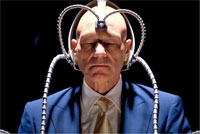|
“I would never pay that much for a car. Never." (some guy that looks and sounds like my Dad)

Here's a concept to help your business development team. Make sure your customers think like you think they think. Put simply, know your buyer’s decision process, especially their default value orientation. The tendency is to assume your customers make decisions the same way you make decisions, that they share your same value orientation. Invest time confirming that your customers think like you think they think. Learn about their default value orientation. It will save you time in the long run.
I learned this lesson when I worked at a bicycle shop located near a hospital. The shop carried Specialized and Miyata bicycles that ranged from $300 to over $7,500 (it was the early 1990s). For the clear majority of our customers, middle-aged doctors and lawyers, the bicycles that met their needs were in the low $700 range. Better than entry level bikes, but not at the level of the expensive racing bikes. However, like moths to a flame, the
doctors headed straight to the most expensive models. Their default value orientation drew them to handcrafted frames with advanced suspensions that forced the rider into hunched-over positions their paunchy bellies weren’t made for. Why pay for more than you need? I thought. Expensive bikes were made for a single season of hard-core racing and meant to be ridden by a crazy fit 20-year-old pro, not these guys. In my mind, it was the wrong solution, a waste of money.
Overhearing me talk to one of these doctors, the owner pulled me
aside and said, “Greg, they’re not spending your money, they're spending their money.”
(Click to read the full article)
|